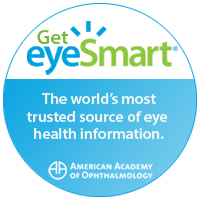Our retina specialist may examine a patient using a variety of techniques, each allowing for a specialized view of the retina and vitreous. Modern technology has added greatly to the diagnosis of retinal disease. Technologic advances of the last decade have made a tremendous difference in evaluating the patient with retina disease. At Lauderdale Eye Specialists we use the most advanced “retina imaging” technology.
Lauderdale Eye Specialists is proud to offer comprehensive retina and vitreous care. Please call us to schedule your appointment with our retina specialist.
Diseases of the Retina
Everything behind the lens of the eye is termed the posterior segment. This includes the retina and vitreous body. The retina (along with the optic nerve) is truly brain tissue. In fact, the retina is essentially a nerve cell which transmits vision to the brain. When light lands on the retina, the message of vision is sent to the brain by the optic nerve. This thin layer of tissue is only as thick as a sheet of paper. Since it is nerve tissue, it is very hard to reverse damage to the retina. Therefore, patients at risk for retina diseases require frequent eye exams and a variety of imaging studies to assess for any signs of early damage. These diseases, if caught, can often be treated with medications, laser treatments or surgery. Treatments may prevent further damage to the retina, and are now so advanced that some damage can even be reversed. Common retina diseases include:
Age Related Macular Degeneration: Macular degeneration is one of the leading causes of severe vision loss in the United States. Risk factors include increasing age, positive family history, cigarette smoking, cardiovascular disease, high cholesterol, female gender, and lighter iris colors. There appear to be two prevalent forms of macular degeneration, dry and wet. The clinical hallmarks of macular degeneration are drusen. To the ophthalmologist, these appear as small yellow or whitish appearing bumps in the retina of the affected patient. These represent abnormal deposits within the retina. Why these deposits occur is not fully understood. Other indicators of age-related macular degeneration include atrophy and pigmentary changes of the retina.
Diabetic retinopathy: It is believed that extended exposure of the blood vessels to hyperglycemia (high blood sugar) damages the lining of the vessels. This, in combination with other physiologic abnormalities in diabetics, results in diabetic microvascular disease. In essence, small blood vessels and their surrounding tissues are damaged. The retina and eye contain many small blood vessels, and are therefore at great risk for damage from diabetes. Risk factors include how long a person has been diabetic, and how well the diabetes is controlled. It has been demonstrated that tighter blood sugar control and diabetes management provides a better visual prognosis in patients with diabetes.
Retinal detachment: This occurs when the retina separates from the back of the eye. There are three basic forms; rhegmatogenous ( a tear in the retina), exudative (fluid under the retina), and tractional (the retina is being pulled away from the back of the eye).
Retinal hemorrhages: Bleeding within the retinal tissues. Usually associated with diabetes, but can occur with a wide variety of disease or retinal vascular abnormalities.
Retinal blood vessel occlusions: Retinal artery or vein occlusions. Frequently due to vascular or systemic disease.
Retinal cancer (melanoma): Melanoma of the choroid. The choroid can also be the site of metastatic cancers form other primary sites, such as breast or lung cancer.
Retinal membranes: Glial scar tissue which forms over the retina. When it affects vision, the membrane can be removed with retinal surgery.
Retinal and intraocular infections: A wide variety of infectious processes are know to involve the retinal and choroidal tissues. Expert treatment is required to evaluate and treat the infection, so as to minimize visual loss. Optimal treatment of retina and vitreous disease requires a fellowship trained retina specialist and specialized imaging and diagnostic equipment.
Lauderdale Eye Specialists uses the most advanced retina imaging technology listed below.
B-Scan Ultrasound: This is a painless procedure that uses high-frequency sound waves to image the retina and intraocular anatomy. It is most helpful when the physician has no view inside the eye, usually due to blood. Our skilled retina specialist can use this form of ultrasound to assess the eye for any structural abnormalities, especially when a clear view to the posterior chamber of the eye is not available.
Retinal Photography: Specialized cameras and lens are used to photographically document retina disease. These photos can than be referred to later in the patients course of treatment to determine if the retina disease has progressed, remained stable, or improved.
Fluorescein Angiography: Fluorescein angiography is an eye test that uses a special dye and camera to look at blood flow in the retina and choroid, the two layers in the back of the eye. It is particularly useful in the evaluation of inflammatory diseases of the eye and vascular diseases of the retina such as Diabetic Retinopathy and Macular Degeneration
Ocular Coherence Tomography (OCT): OCT uses light waves to image the retina, providing better image resolution than sound waves (B-scan). The picture produced is very similar to what it would be like to view the retina with a microscope, allowing for very accurate evaluation of retinal disease processes. It is among the newest retina imaging techniques, and has quickly become one of the most important tools in managing patients with retinal problems.
Lauderdale Eye Specialists provides this on-line information for educational purposes only and it should not be construed as personal medical advice. Lauderdale Eye Specialists disclaims any & all liability for injury or other damages that could result from use of the information obtained from this site.


